Do you really think that your ability to build and maintain professional connections isn’t influenced by certain widespread preconceptions and myths about communication?
Well, think again.
Some communication myths are so pervasive that you’d be hard-pressed to find someone who doesn’t believe in them — at least partially.
Yet, letting those myths about communication affect your professional interactions can cause a range of negative outcomes, including:
- Decreased productivity, as people struggle to do their jobs due to poor communication practices within the company,
- Decreased employee engagement, as employees find it difficult to understand the company mission if it has not been properly communicated to them,
- Reduced trust, as management may perpetuate communication myths employees find unfair or outright manipulative,
- Talent drain, as disillusioned employees leave the company to seek better work opportunities, and
- Financial damages, as some estimates indicate that poor workplace communication causes a loss of $2 trillion annually in the US alone.
To help you avoid this nightmare scenario, let’s separate the myths and realities of communication in the workplace.

Table of Contents
Communication myth #1: Communication is an innate skill
One of the most enduring myths about communication is that good communicators have a natural ability to get their message across.
However, that couldn’t be further from the truth.
After all, we have devoted an entire blog to teaching people how to become more effective communicators.
So, we know better than anybody that communication is a learned skill.
In fact, it’s a collection of skills including:
- Charisma and confidence,
- Emotional intelligence,
- Cultural competence,
- Conflict resolution,
- Active listening, and
- Honesty.
So, if you notice that you lack some of these skills, the good news is that you can always improve.
Communication myth #2: Effective communication is about telling the truth, the whole truth, and nothing but the truth
Honesty is an integral part of communication.
However, those who believe effective communication is about always telling the whole truth are operating under a misconception.
After all, in the business world, there are benefits to omitting certain information, whether it be:
- For the sake of negotiations,
- For security reasons, or
- To adhere to a previously agreed upon NDA.
Even outside of professional communication, there are times when our honest opinions wouldn’t add to a conversation, especially when they’re delivered carelessly.
So, even though honesty is a trait effective communicators should nurture, it has to be accompanied by a dose of empathy and common sense.
For example, we can see what an overabundance of honesty delivered without empathy might look like in a conversation on the employee communication app, Pumble.
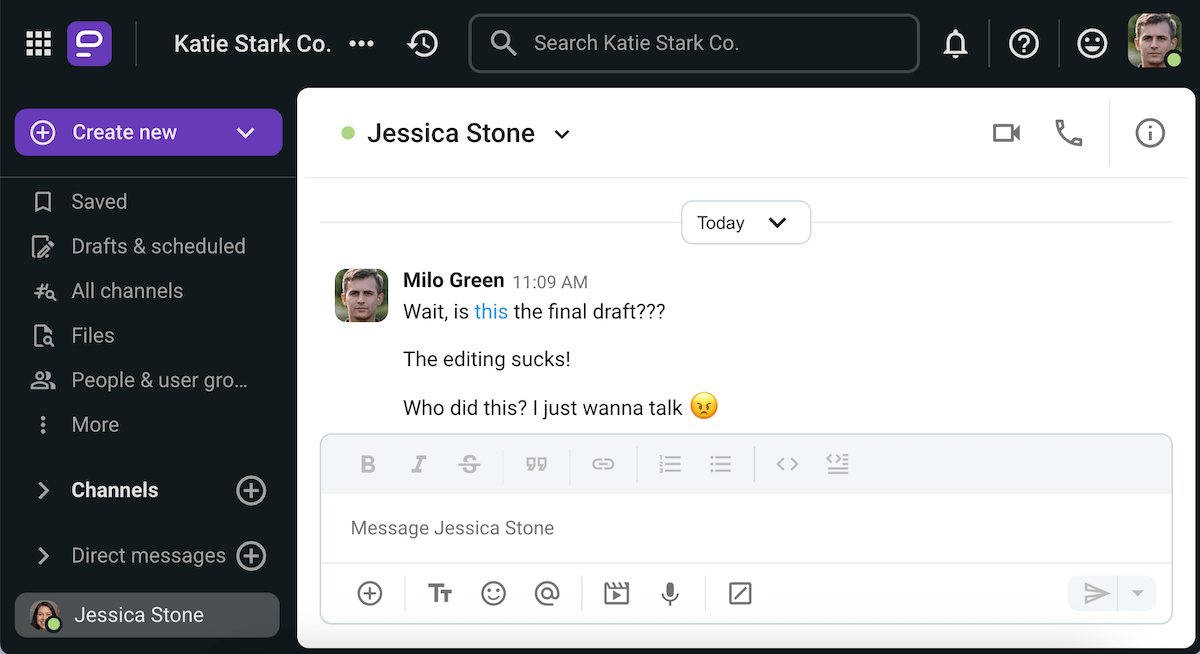
Communication myth #3: Communication is good if it feels good
Most people believe that any conversation that ends on a positive note is a productive exchange.
If we presented our points logically, remained calm and assertive, and even managed to solve some problems, we may assume we had a great conversation.
But, feeling good is, in fact, not the goal of effective communication.
Instead, communication should lead to increased mutual understanding.
Even if the people involved aren’t entirely happy with the outcome of a conversation, the exchange can still be considered a success if everyone walks away with an understanding of their interlocutors’ points of view.
So, how can you achieve that result in a professional environment, even if your company favors asynchronous communication? You can try:
- Paying more attention to the clarity of your messages — both verbal and written,
- Upgrading your active listening skills and paying close attention to the responses you get during a conversation,
- Noticing people’s non-verbal cues during video conferences or meetings, and
- Repeating what’s been said in a conversation and asking follow-up questions to make sure you’ve understood everything.
Focusing on getting your point across — as well as fully absorbing what other people are saying — should help you avoid delays, missed deadlines, and other workplace challenges that can occur due to miscommunication.
Communication myth #4: Disagreements are a sign of poor communication
Just as feeling good after a conversation is not necessarily proof that good communication has taken place, arguments are not necessarily signs of poor communication.
When people are passionate about their points of view, they naturally feel compelled to defend them.
As long as people can argue respectfully, there’s no need to stifle those dissenting views.
In fact, substantive conflicts, or disagreements concerning business strategy or processes, can often lead to better results in the long run.
It all comes down to knowing how to momentarily diffuse tense situations, allowing people to approach the matter with cool heads.
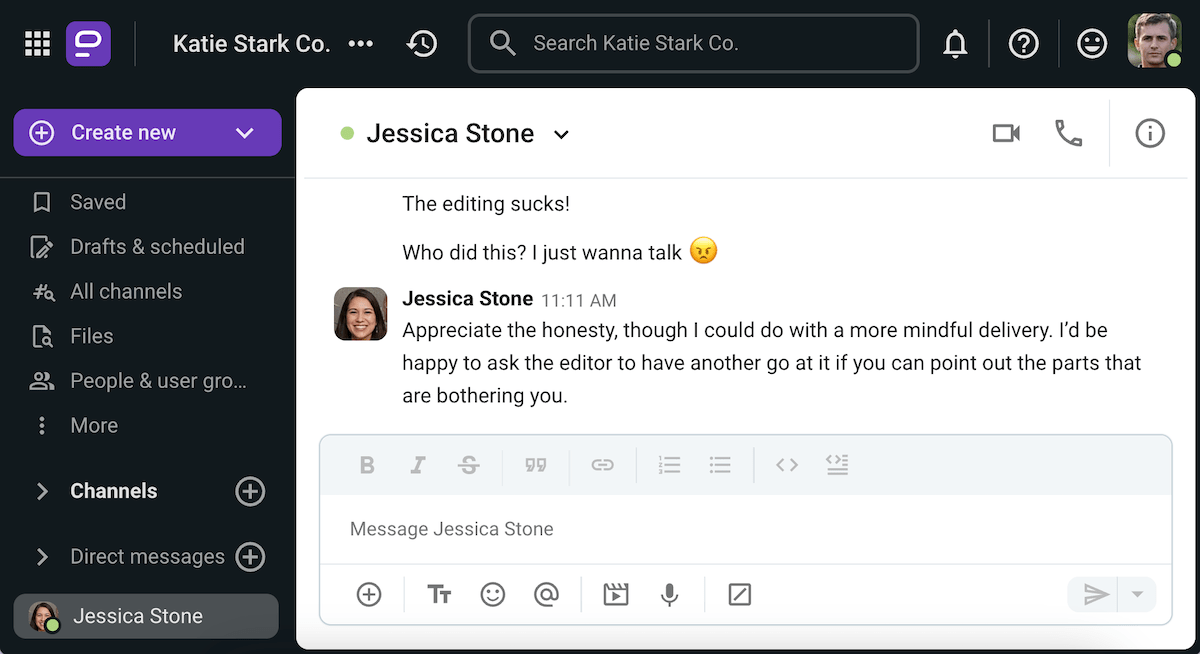
Communication myth #5: 93% of communication is nonverbal
The claim that nonverbal cues make up as much as 93% of all communication is one of the most enduring communication myths.
However, it stems from a misinterpretation of actual scientific data — a misconception people have debunked so many times, it even got a name: the Mehrabian Myth.
To make a long story short, this myth stems from a 1967 research paper on the decoding of inconsistent messaging by Albert Mehrabian and Morton Wiener.
The percentage in question is the sum of 2 data points: the amount of information people absorb from someone’s body language (55%) and tone of voice (38%) when dealing with inconsistent messaging.
So, when someone gives us inconsistent information (for example, by lying to us), only 7% of the meaning we receive will have been taken from their actual words.
Of course, that doesn’t mean that our everyday conversations follow the same logic.
Unless we’re in situations where we expect to encounter inconsistent messaging, people’s words are as important as their nonverbal cues — if not more.
Communication myth #6: Internal communication is a one-department job
People who think of organizational communication as being largely one-sided also tend to believe that it should all stem from one department within the company — namely, human resources.
But, even though HR is responsible for devising an effective internal communication plan, it can’t — or, rather, shouldn’t — do so without employee input.
Listening to employee feedback and changing the internal communication strategy when necessary is a great way to let people feel involved in building the overall company culture.
On top of that, doing so should also prevent the development of detrimental communication patterns within teams, such as the silo mentality.
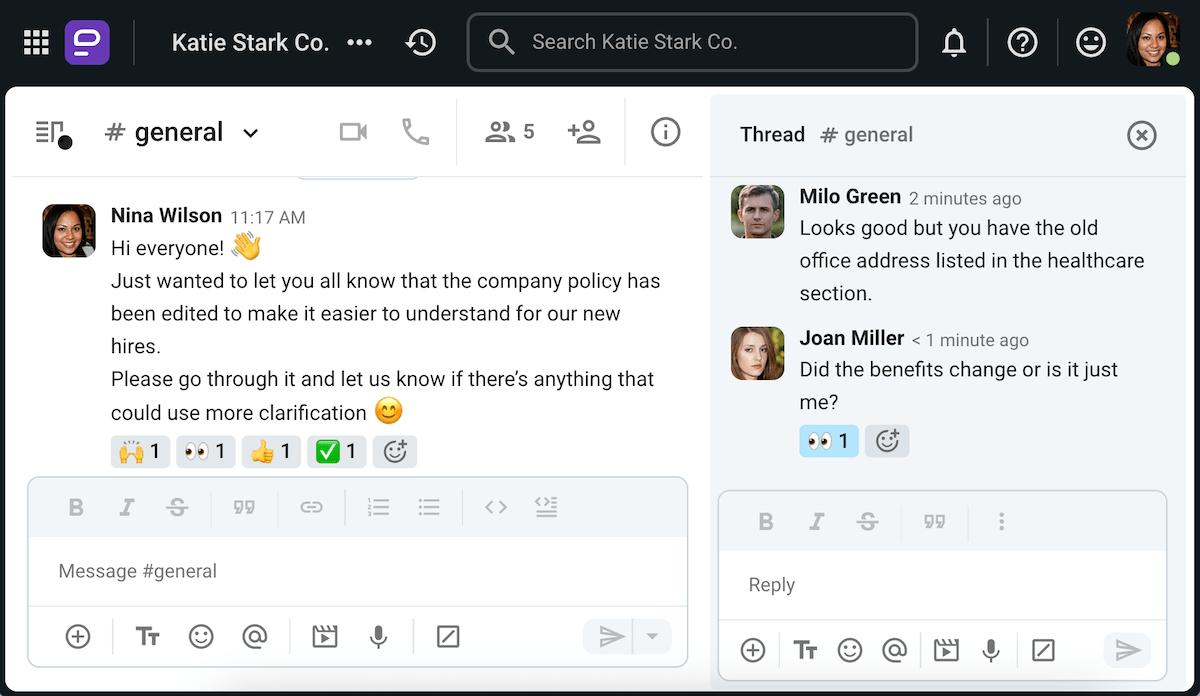
Communication myth #7: Workplace communication is a one-way street
One of the biggest and longest prevailing workplace communication myths is the belief that successful internal communication begins and ends with information distribution.
Yet, even though sending out information to employees is a vital part of internal communication, it’s only a small part of an effective workplace communication strategy.
After all, one-sided downward communication doesn’t allow employees to ask clarifying questions or offer feedback, which significantly increases our chances of being misunderstood.
To avoid this, companies should encourage dialogue even when engaging in simple informative communication, by:
- Prioritizing communication channels that allow employees to respond and engage in company news (so, rather than opting for a newsletter, you might deliver company news through a dedicated channel on the team communication app, Pumble),
- Making sure there’s no ambiguity or room for misinterpretation in company communications (including the official documentation or instruction manuals employees might refer to),
- Openly asking for feedback (in Pumble, employees can be asked to respond with emoji reactions or thread messages), and
- Creating opportunities for connection (by starting casual conversations and finding shared interests with your coworkers).
Communication myth #8: The more you communicate, the better
Organizations often fall into the information overload trap.
On the one hand, it’s seemingly reasonable to believe that more emails, messages, meetings, and shared files automatically translate into better communication and productivity.
However, it’s important to make a clear distinction between relevant business information, and insignificant, distracting content.
The ‘more is better’ approach to internal communication tends to lead to:
- Poor decision making (because people’s ability to process information doesn’t accelerate as they are exposed to new information, resulting in them ignoring huge chunks of data and making mistakes),
- Decreased productivity (as having to sift through countless files and folders to find what you’re looking for takes a toll on your cognitive ability),
- Feelings of disconnection and misalignment (stemming from a lack of information sharing procedures and tools, which leaves employees having to figure things out for themselves), as well as
- Deteriorated employee well-being (as employees experience burnout due to overcommunication).
So, while remote workplaces could benefit from overcommunication, it’s important to deliver all the important information in one fell swoop — and without unnecessary info-dumping.
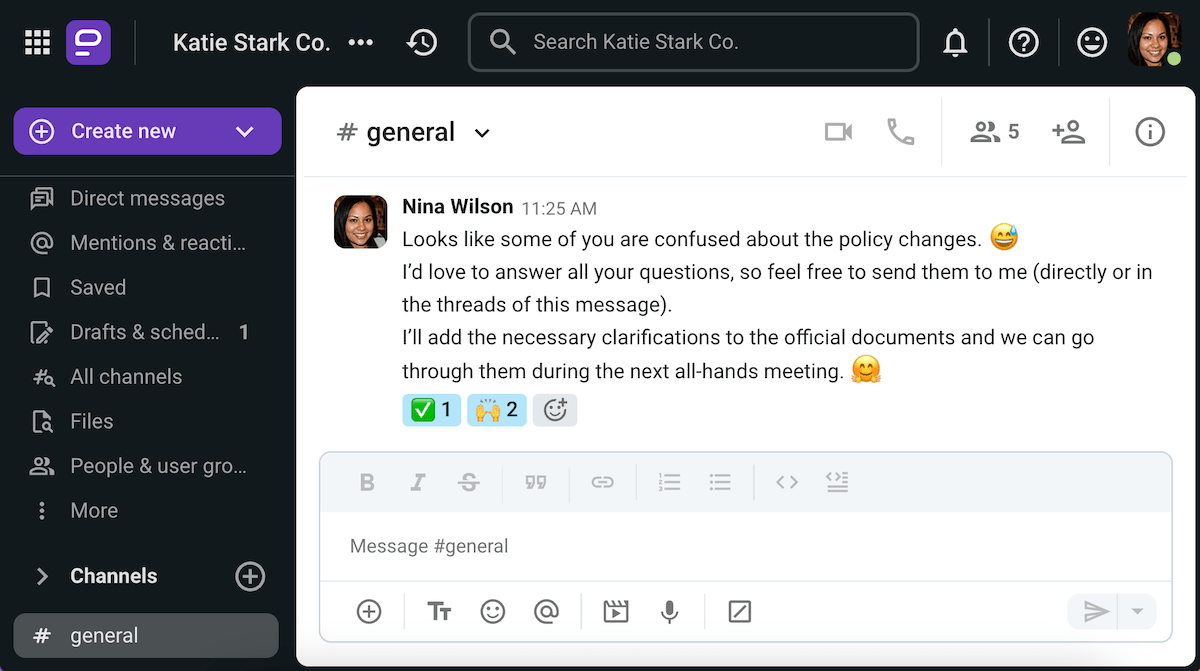
Communication myth #9: The Sandwich approach is the best way to deliver feedback
The so-called Sandwich approach in business communication has been largely popularized by managers who most commonly use it when discussing problematic performance reviews.
According to the workplace communication statistics we have compiled, as many as:
- 69% of managers feel uncomfortable when communicating with employees face-to-face, while
- 37% of managers aren’t comfortable with giving feedback (forcing employees to go out of their way to ask for feedback).
To alleviate that discomfort, managers have adopted the Sandwich method, which allows them to offer critique by sandwiching it between two compliments.
However, the Sandwich approach may not be as effective as one might hope.
For one, employees may choose to focus only on the positive comments, completely missing the point of the feedback session.
On the other hand, the method can also negatively affect employee trust as it could make genuine compliments sound insincere.
Instead, managers should be more assertive, clear, and direct when giving constructive feedback.
💡 PUMBLE PRO TIP
The purpose of giving feedback isn’t to correct past mistakes but to influence future outcomes. Check out this article to learn more about focusing your feedback on the future:
Communication myth #10: Misunderstandings are impossible when everyone speaks the same language
Believe it or not, some people think that speaking the same language is all it takes to avoid misunderstandings.
After all, the words we use have set meanings, so everyone who hears or sees our message should be able to absorb the same meanings from it, right?
Well, that’s not necessarily the case.
People may assign different meanings to the same words based on their prior understanding of the words in question.
This often happens with business speak or industry jargon, which is why we should make an effort to speak in simple terms, especially when addressing coworkers from different departments.
Remember: just because the words you’re using make sense to you, doesn’t mean that they’ll make sense to everyone else.
So, double-check your messages to make sure their meaning is clear before sending them out.
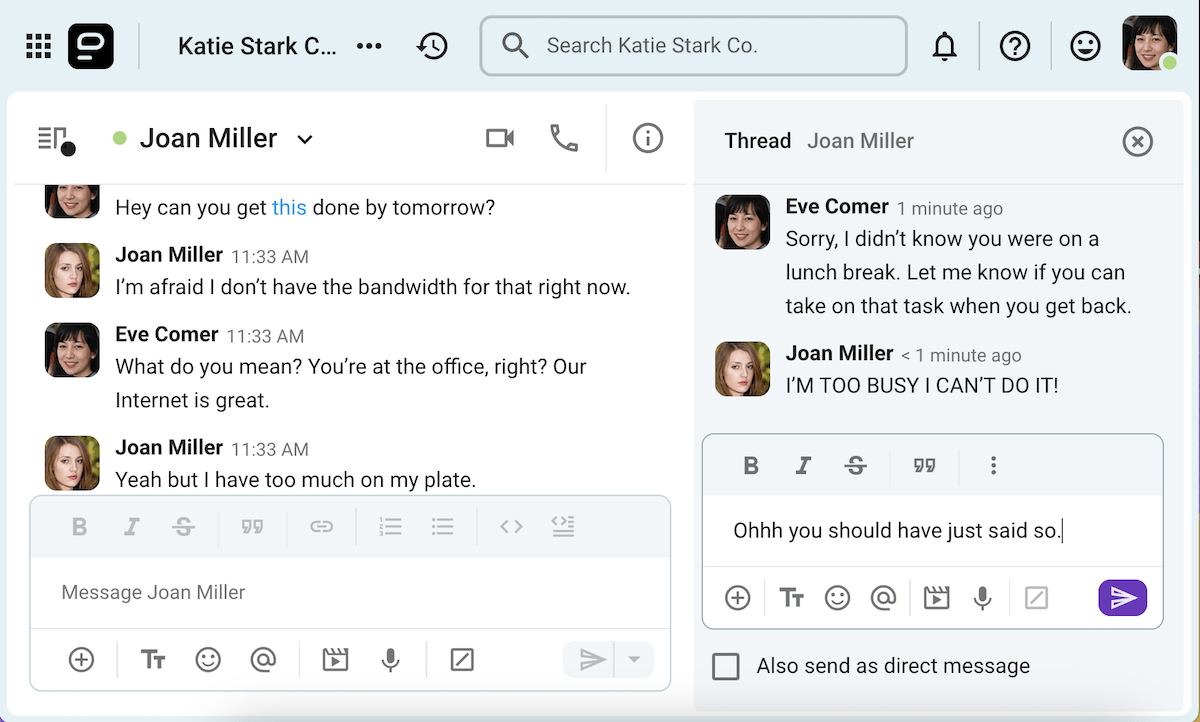
Communication myth #11: Email should be your primary workplace communication channel
Believing that email should be the primary communication channel in the workplace is one of the most outdated communication myths you may encounter at work.
But, let’s be honest — email is not the most efficient communication tool we might use in a remote work environment.
From delays in communication to the general clutter and chaos, email is responsible for the majority of communication challenges in the modern workplace environment.
Luckily, some people seem to have realized that the use of email carries a high risk of developing siloed communication among teams.
Even though 92% of employees still use email, group messaging tools like Pumble have established themselves as an excellent alternative to email, and are now being used at a rate of 70%, according to the previously mentioned workplace communication statistics.
With features like channels, threads, direct messages, emoji reactions, and file sharing, employee communication apps allow for a more productive collaborative experience and streamlined workplace communication.
Communication myth #12: Internal and external communication should be kept separate
Many companies still operate under the illusion that internal and external communication are functions that should be handled by 2 separate departments within the organization.
And, while that might be true in some cases, allowing internal and external communications to become misaligned could have a negative impact on the company brand.
After all, your external communications begin inside the company with employees as your first customers who need to understand and align with your brand messaging to believe in your product and work towards your goals.
Luckily, there is a way for them both to coexist on the same platform — without resorting to using email.
In a business messaging app like Pumble, you can use guest access accounts to make sure all company stakeholders, from employees to third-party clients or customers, are on the same page.
You could even create a dedicated channel to use as a bulletin board for external collaborators by creating single-channel guest accounts whose permissions only extend to that channel.
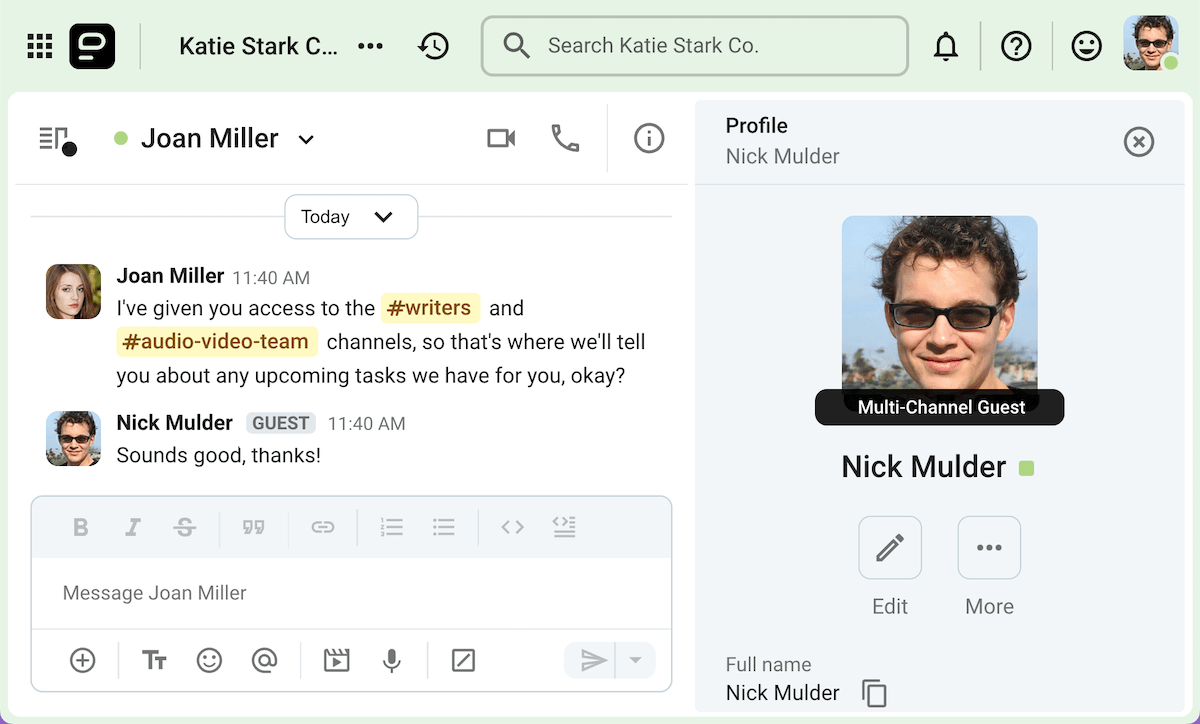
Communication myth #13: Employees understand the company’s mission and vision
Most organizations assume that their employees are well aware of the company mission and vision statement.
After all, it’s out there, on the website — which means that it’s been clearly communicated.
However, assuming that your employees are familiar with your company mission can cause unnecessary frustration on your end as well as reduced employee engagement.
After all, how could employees who don’t have a clear understanding of how their work contributes to the company’s overarching vision feel any sense of belonging or accomplishment?
So, what can you do to make sure your employees understand the company vision?
Just make sure to remind them of it from time to time, whether it’s through:
- Sharing regular updates about the company through the designated channels in your team chat app (you can use the #general channel for the overall vision and other specific channels for individual products and projects),
- Instructing team leaders to transparently highlight important team and company goals during team meetings, and
- Hosting all-hands video calls for annual or quarterly announcements.
Communication myth #14: Social media and team messaging apps promote the toxic “always-on” work mindset
It’s commonly believed that team messaging and social media apps encourage the “always-on” culture.
After all, these communication platforms are easily accessible through our phones, which makes it difficult to:
- Disengage from conversations that are happening on those apps, and
- Unplug after work, which remains the biggest challenge of remote work, according to 22% of workers.
Then again, email can also be accessed through apps on our phones.
So, why don’t we associate that communication platform with the “always-on” culture?
The simple answer is that this particular myth about communication is actually just a scare tactic, the remnant of a time when social media platforms and professional communication apps first hit the scene, sparking resistance in older generations.
In reality, these communication platforms are only as toxic as we let them be.
So, instead of blaming them for our poor work-life boundaries, we can take advantage of the features that are built into those tools to make sure they don’t become a distraction.
For example, in Pumble, users can choose how and when they get notified about new messages in the notification preferences panel, as seen below.
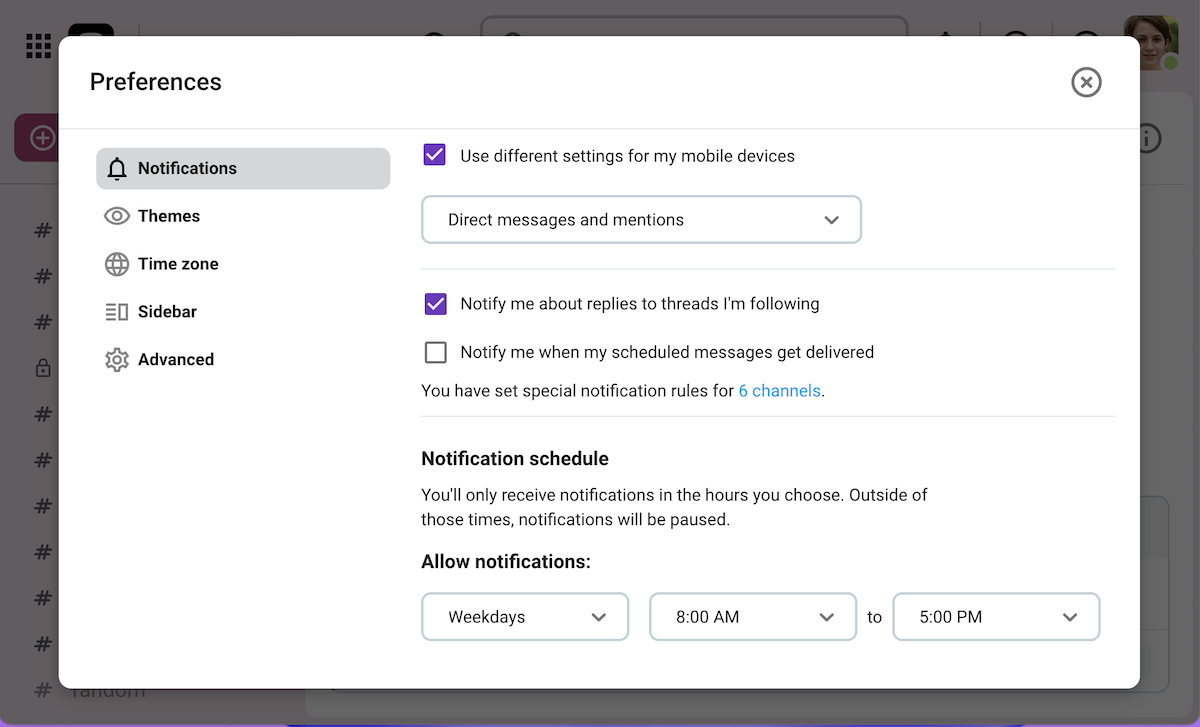
Communication myth #15: Anything goes in virtual communication
As teams started switching to a remote work environment, the majority of workplace communication moved to a virtual setting.
Almost by default, teams have adopted an informal approach to communication.
Unfortunately, companies that loosened those rules of engagement too much quickly realized the negative impact doing so had on employee trust and productive collaboration.
Teams with wide generation gaps, for example, are at a higher risk of miscommunication and misunderstanding if there are no clear boundaries concerning the use of informal slang in virtual workplace communication.
Very often, informal messages can get interpreted as disrespectful — thus, boundaries are crossed and feelings get hurt.
Luckily, avoiding those negative outcomes should be simple enough, as long as everyone agrees to adhere to common-sense rules for effective virtual workplace communication.
Pumble — your partner in busting communication myths
As harmless as some of the communication myths we’ve discussed may seem, they can create serious organizational issues if left unattended.
Therefore, debunking these misconceptions is the first step to building more effective workplace communication.
To that end, having a centralized communication platform that allows you to influence the way your employees are communicating should be a helpful addition to your overall communication strategy.
A simple yet powerful team communication app like Pumble is the perfect tool for sharing documents, collaborating, and giving feedback (without having to resort to the Sandwich method).
The app allows its users to customize their workplace communication experience by:
- Adjusting their sidebar,
- Choosing a theme color,
- Setting their availability status, and even
- Creating a personalized notification schedule.
On its own, Pumble is one of the most well-rounded yet affordable communication apps on the market.
Moreover, if your company also happens to be in need of time tracking and task management tools, the CAKE.com bundle pairs Pumble with its sister products — Clockify and Plaky.
Interested in what else Pumble has to offer? Discover the joys of seamless communication — create a free account today!




